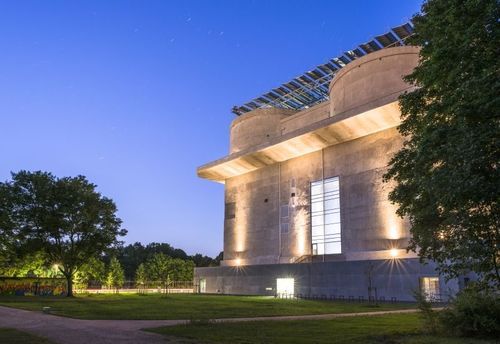Walmart – a leader in solar power – is dipping its toe into LEED certification, but it doesn’t want to make a big deal out of it. Not because the company is shy, but because it doesn’t want anyone to expect other new buildings in the future to also try to meet U.S. Green Building Council standards.
Chris Schraeder told the reporter that Walmart doesn’t “want to open up a precedent that this is going to be a standard going forward, because it’s not.”
Indeed, what trumps all for Walmart, Schraeder told the Plain Dealer, is being able to sell stuff for minimal cost, and it doesn’t want the Leadership in Energy and Environmental Design program to get in the way of that. “Our whole approach is about everyday low cost, so in general, we wouldn’t pay a premium for certification,” Schraeder said.
So why is it going through the LEED process in Ohio? Because of an agreement by South Euclid and the property developer that buildings going up on what used to be a golf course had to meet the standard.
Still, Walmart says on its Green Room blog that the South Euclid store outside Cleveland “will serve as a model for environmentally-friendly design for our future stores.” The store uses 100 percent LED lighting, has electric vehicle charging stations in the parking lot and these other energy-efficient features, according to Walmart:
- LED lighting in the parking lot that the company says will reduce energy consumption by 50 percent.
- Skylights that will allow natural light into the store, “reducing energy to light the sales floor by an average of 25 percent.”
- Re-use of the heat from on-site refrigerant equipment, which can supply up to 60 percent of in-store hot water needs.
- A test of doors on cases that house perishable items, which the company believes could cut refrigeration energy use by 20 percent or more.
- A white membrane roof that reflects light better than a darker roofing color, reducing overall building energy consumption.
 A massive German air raid bunker, which had been derelict for several decades, now hosts a regenerative power plant supplying the surrounding area with green energy. The project is part of the “Renewable Wilhelmsburg” climate protection scheme, which aims to provide the 50,000 Wilhelmsburg residents with CO2-neutral electricity by 2025 and with climate-neutral heating by 2050.
A massive German air raid bunker, which had been derelict for several decades, now hosts a regenerative power plant supplying the surrounding area with green energy. The project is part of the “Renewable Wilhelmsburg” climate protection scheme, which aims to provide the 50,000 Wilhelmsburg residents with CO2-neutral electricity by 2025 and with climate-neutral heating by 2050.
